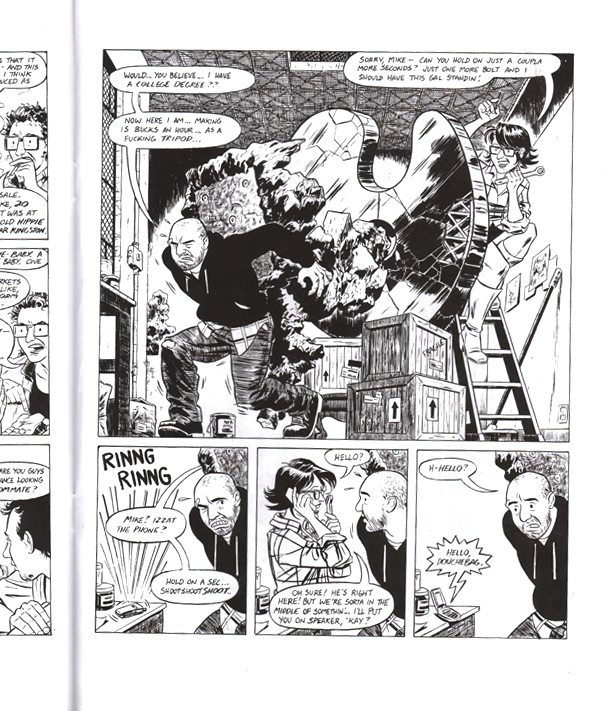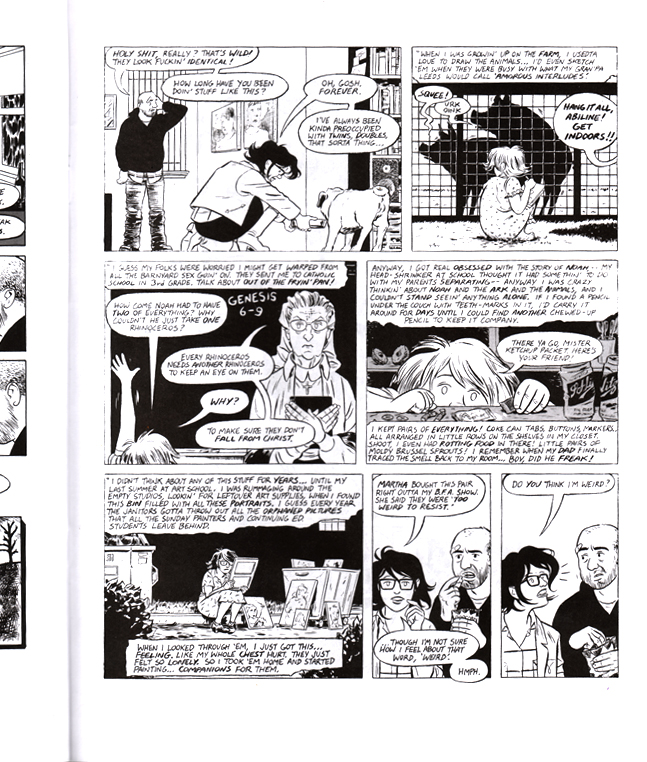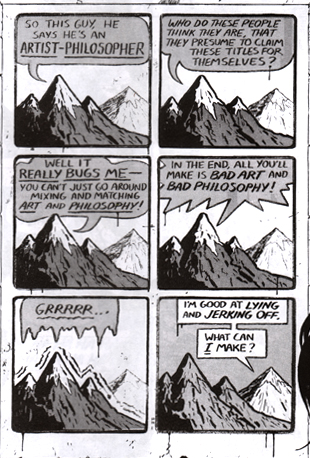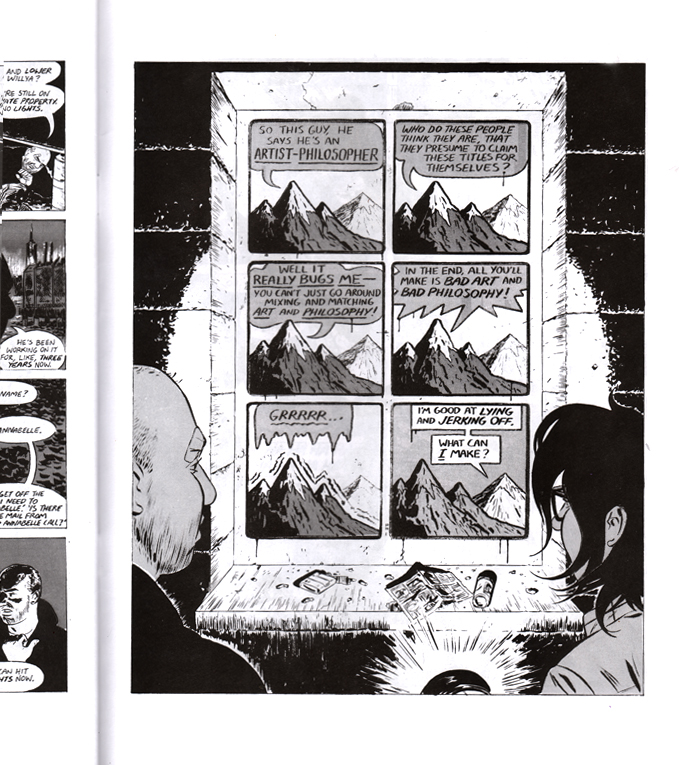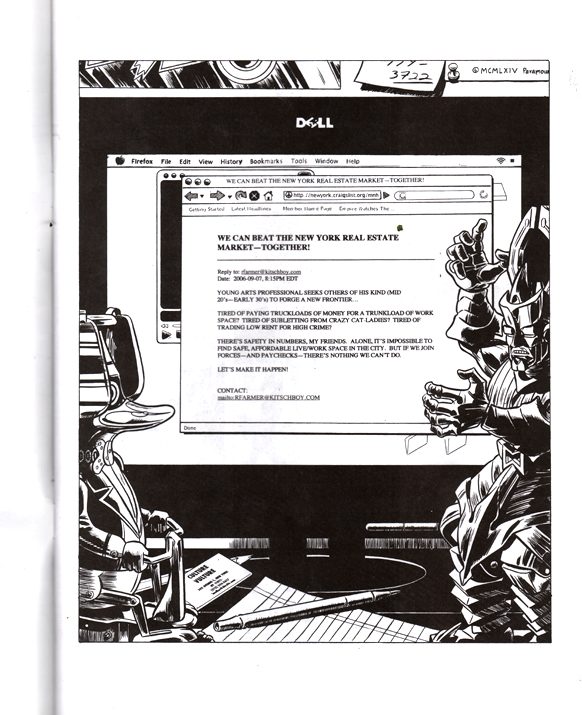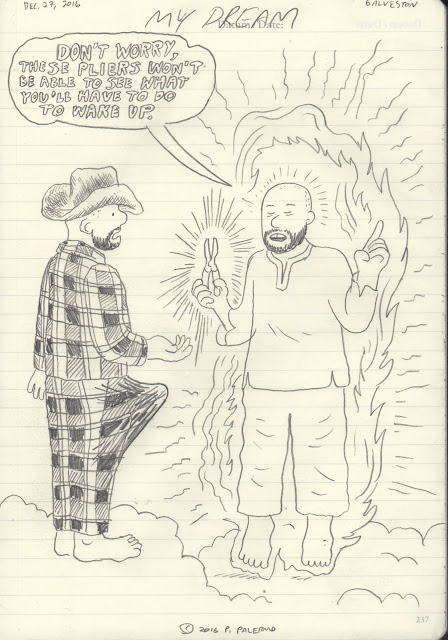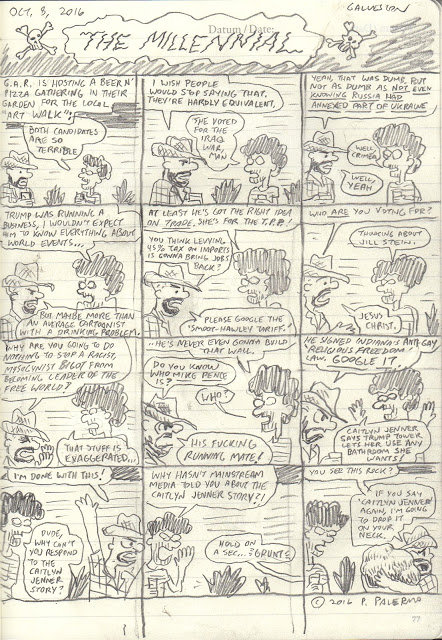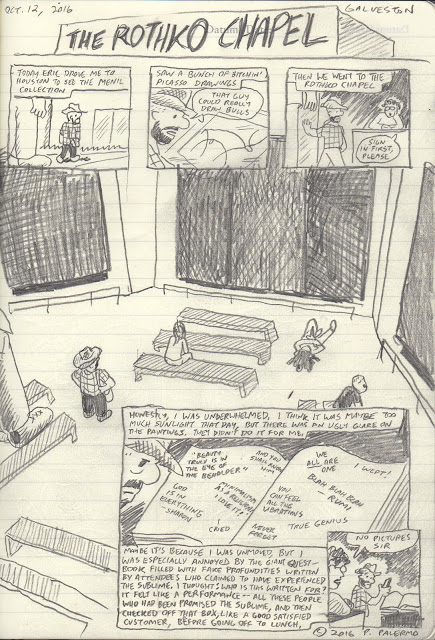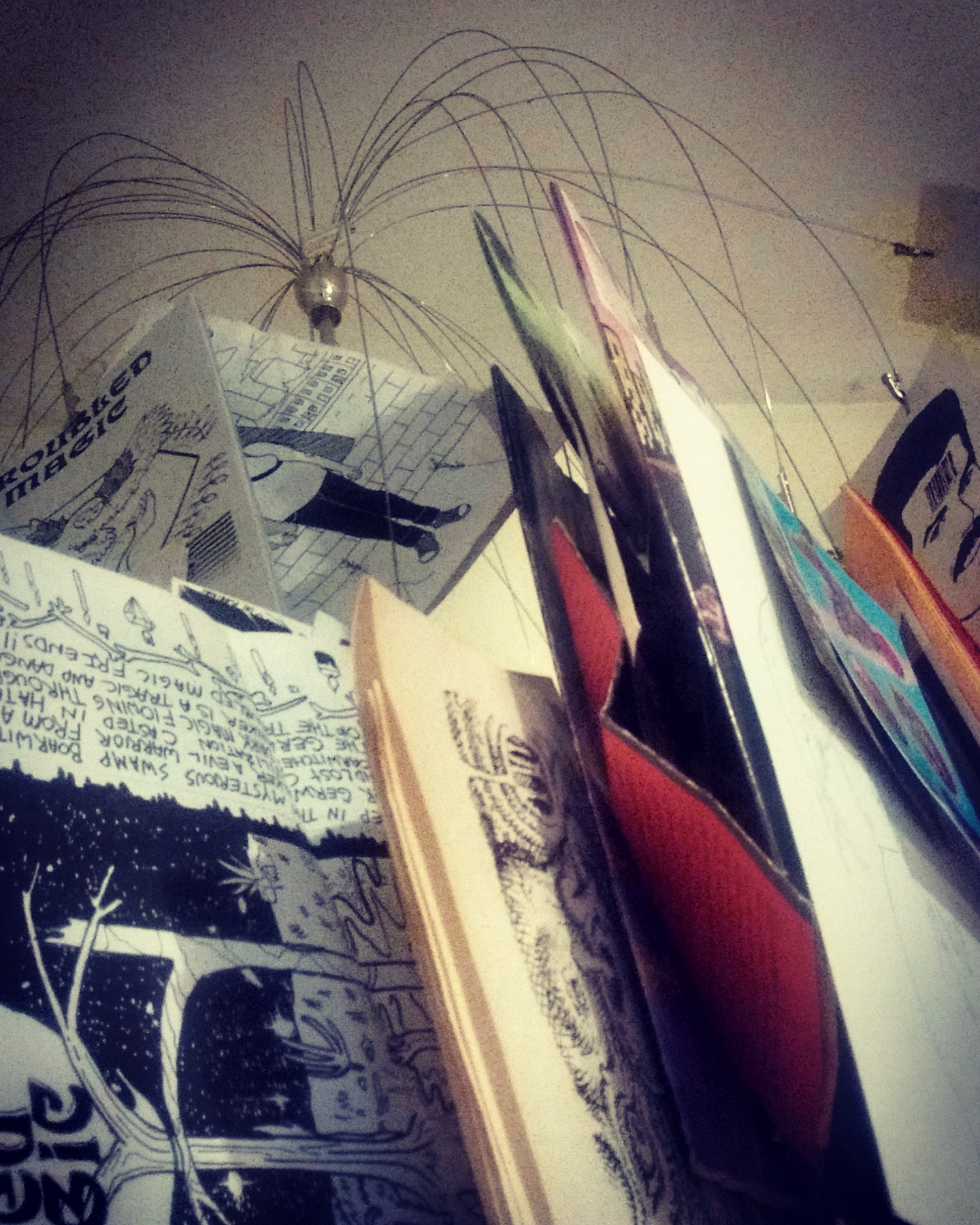 |
Welcome to my 'zine tree! Here in my studio, I've got this wire-y thing hanging above my computer desk chock-full of paper goods that have kept me curious. Instead of filing one thing away when I wish to add something, I've decided to do these features about some of the creators' works on the tree. There's a little bit of everything up there - some photography, some stickers, some floppy comics, but most of it is cartoon and comics art and all of it is independently produced. |
|---|
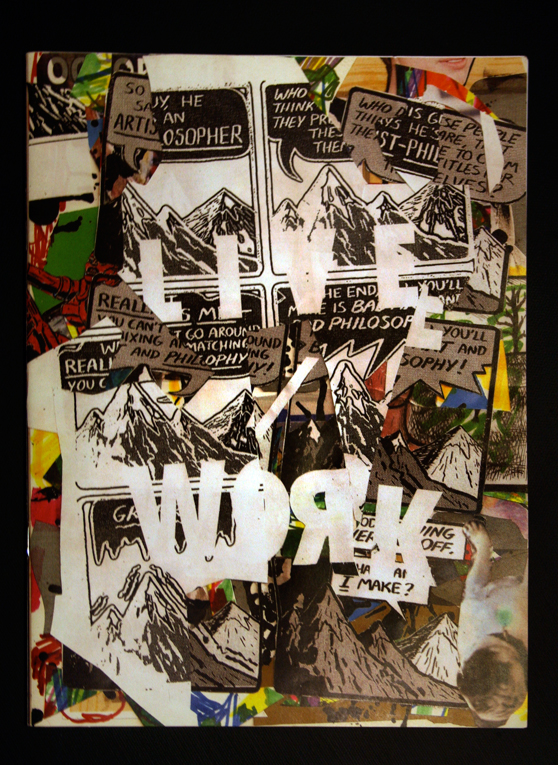 BIO: Pat Palermo is an artist and cartoonist currently living and working in Brooklyn, NY. He received a BFA from Ohio State University in 2001 and an MFA from Bard College in 2005. His first comic book, Cut Flowers, was a 2006 recipient of the Xeric Grant for self-publishing cartoonists. His work has been exhibited in New York, Los Angeles, Geneva, Milan, and Paris. He is currently writing and drawing Live/Work, a serialized graphic novel set in the contemporary art world. In 2010, he co-founded SOLOWAY, an artist-run exhibition space in the South Williamsburg section of Brooklyn. Most recently, he was awarded the Galveston Artist Residency in Texas for the 2016-17 year. ------------------------------------------------ AG: Hiya Pat! Let's begin. What made you want to create Live/Work? PP: Well, I’ve never thought that the art world has been portrayed—or satirized—effectively at all in other media. I remember that even Six Feet Under, a show that I mostly admired, tried a little and mostly failed at it. So I wanted to write a story that I felt more accurately portrayed people in and around the art industry. Some are pretentious, some are grotesquely self-absorbed, but many are incredibly intelligent, incredibly hard working, nice people, and it seems like they’re never portrayed that way, that there’s never any effort to actually understand their trajectory. Also, I had come off of a long and arduous process of building out an actual live/work space with other artists in Brooklyn, and I was thinking a lot about the difference between the utilitarian process of building walls, floors, stairs, and the satisfaction of that, against the process of making art. And the community that organically grew out of the shared purpose of building a home, as opposed to the more competitive and vaguely-defined contours of an ‘art community’. Artists are like fish in an aquarium— keeping them in a community requires a delicate equilibrium, or they just end up eating each other alive. But that community is still so important—maybe the most important thing—so I wanted to write about the birth, life, and potential death of a small community of artists. Live/Work #1 and the coming #2 issue cover the ‘birth’ part at least. |
|---|
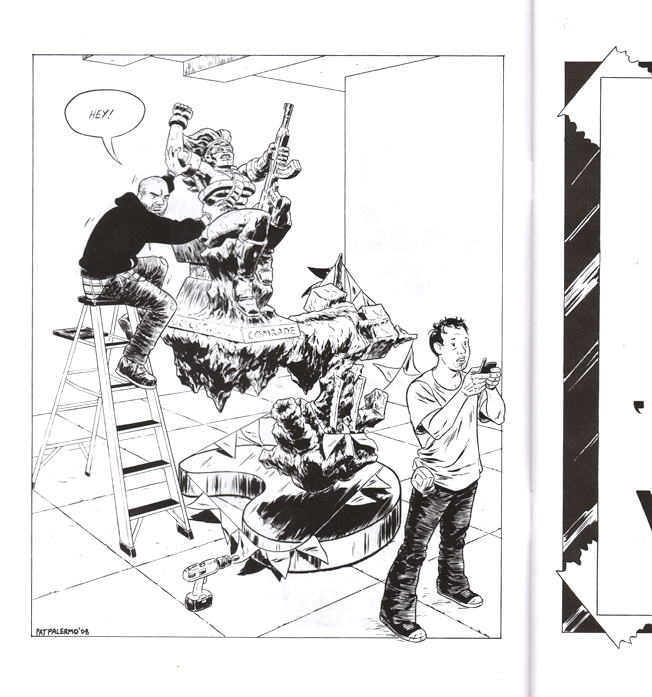
Most people never witness the very un-fabulous process of presenting art to the public, much less paying mind to the lives of art handlers, office workers, artists even. A white gallery space’s command over its visitor is still very analogous to ideal Greek architecture — the perfection of the craft contained within it also has a mandate to wipe away any evidence of actual labor. When one enters a gallery, the workload of installers, salaried administrators, is vanquished by the stage that is the white cube.
PP: Thank you! It means a lot to me to hear that from someone who’s been in those trenches. Yeah, I feel like a lot of writers treat art like a black box, or like a computer in an ’80’s movie or the internet in the ’90’s. You know, like what goes on inside is just...inscrutable magic! When in fact it’s mostly very prosaic. It’s work.
In fact, if there’s one thing about the art world that I have a real beef about, it’s how it cloaks itself in this exceptional language—lofty political or even mystical rhetoric, while in fact acting like any other for-profit industry. The art world is always trying to have it both ways. And what you say about concealing labor is very gratifying, since I just spent DAYS drawing a multi-page sequence for Live/Work #2 describing each step of constructing a two-part sculpture mold. I was sitting there thinking, "Why the fuck am I doing this to myself? Who in their right mind is going to read this whole thing?" but I felt it was important that the rigor of drawing of the fabrication process match the rigor of the labor -- to not gloss over the huge expenditure of energy in fabricating art.
